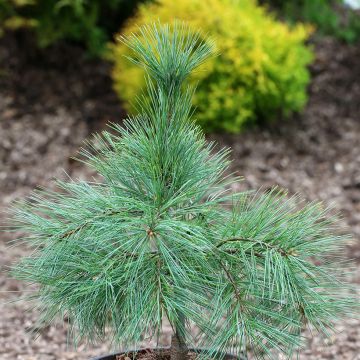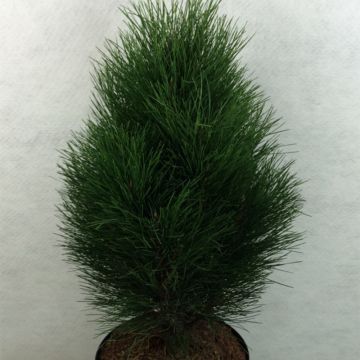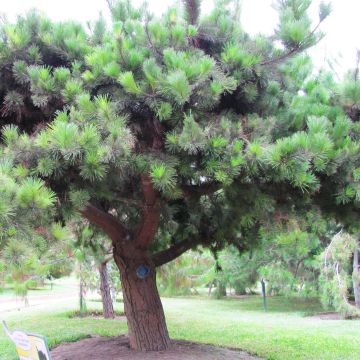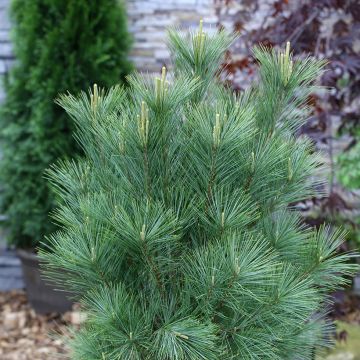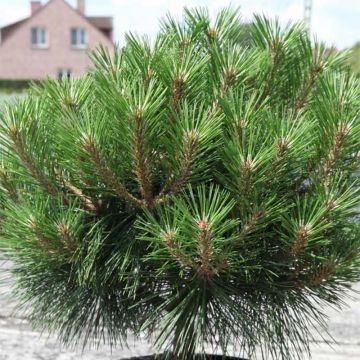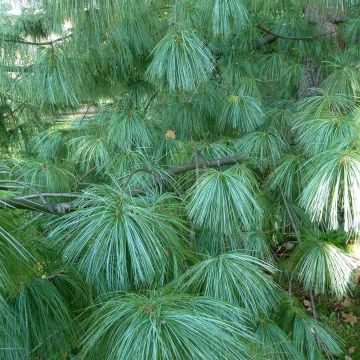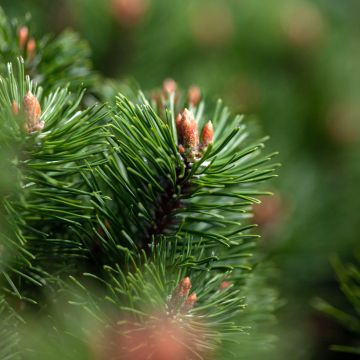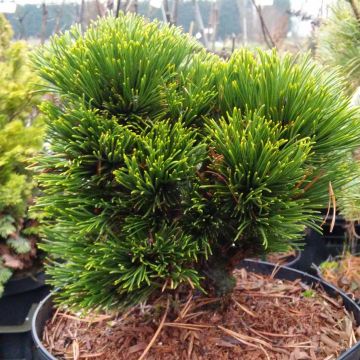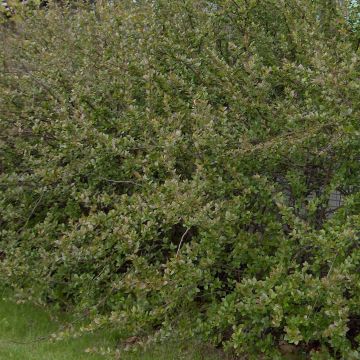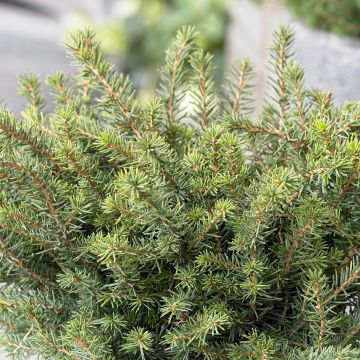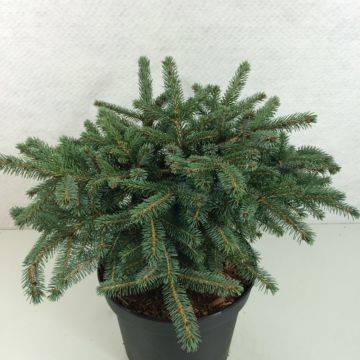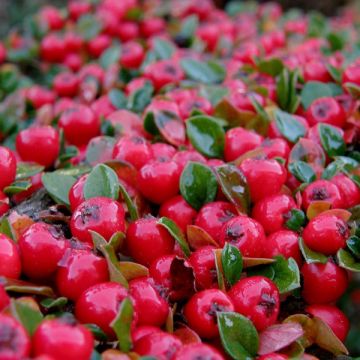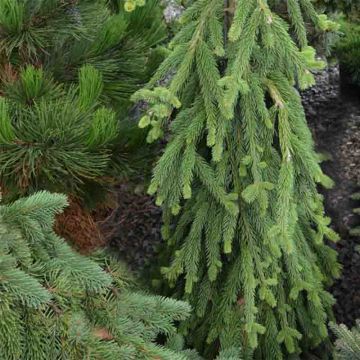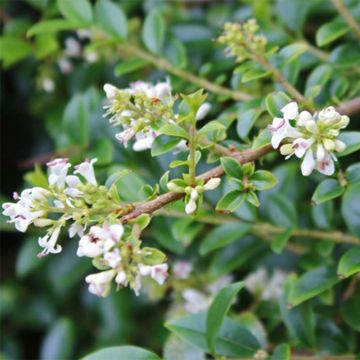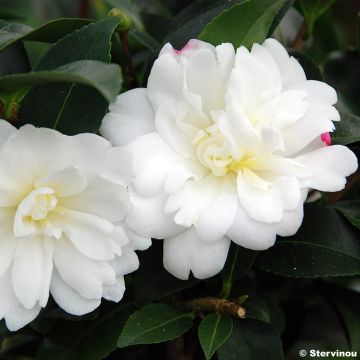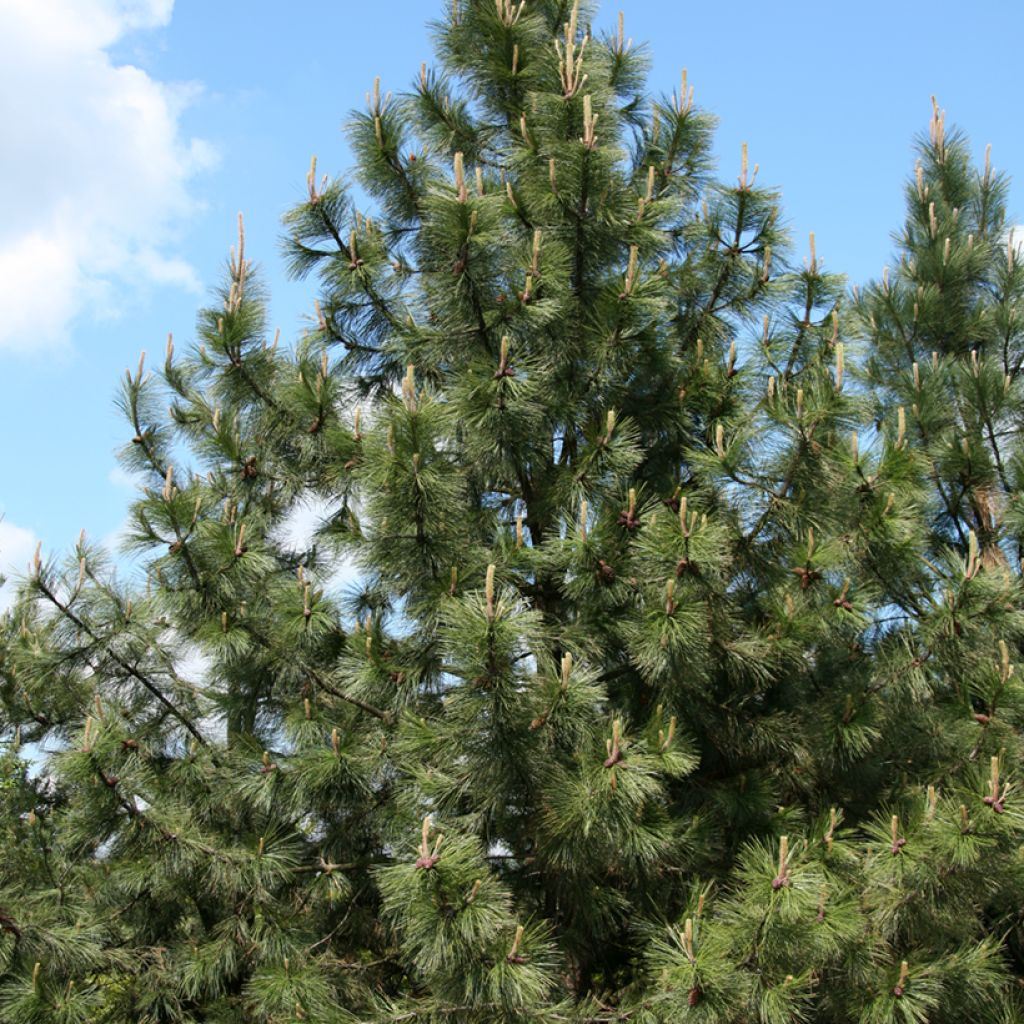

Ponderosa pine - Pinus ponderosa
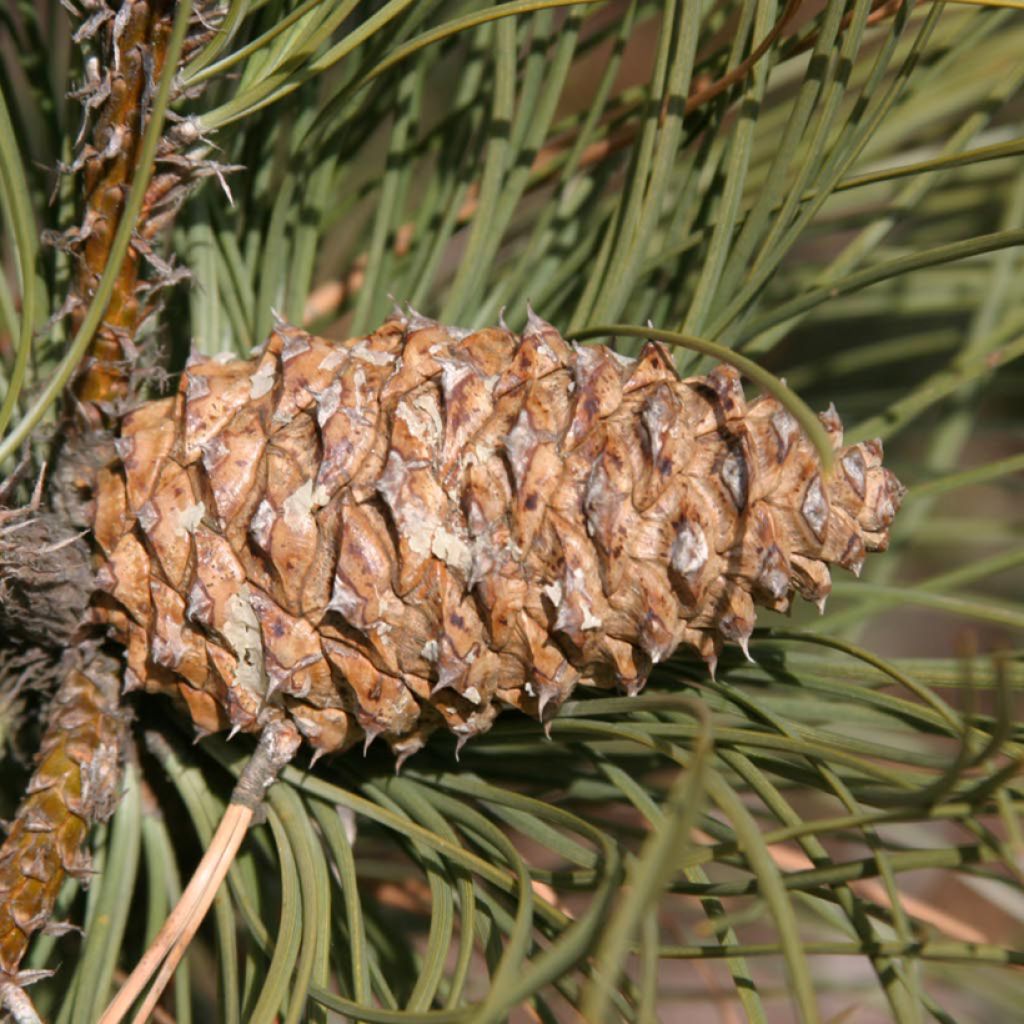

Ponderosa pine - Pinus ponderosa
Ponderosa pine - Pinus ponderosa
Pinus ponderosa
Ponderosa pine, Bull pine, Blackjack pine, Western yellow-pine, Filipinus pine
This item cannot be shipped to the selected country
Delivery charge from €6.90
More information
Delivery charge from €6.90
More information
Schedule delivery date,
and select date in basket
This plant carries a 24 months recovery warranty
More information
We guarantee the quality of our plants for a full growing cycle, and will replace at our expense any plant that fails to recover under normal climatic and planting conditions.
From €7.90 for pickup delivery and €6.90 for home delivery
Express home delivery from €8.90.
Does this plant fit my garden?
Set up your Plantfit profile →
Description
Pinus ponderosa, the ponderosa pine or western yellow pine, is undoubtedly the most emblematic pine of the entire American West. It is a majestic conifer with a broad conical habit and dark green foliage that stands out for its very thick and decorative bark. It deserves a prime location in a park or a very large garden, as a standalone specimen. Very undemanding and adaptable, this species thrives in well-drained rather poor soils and tolerates summer drought quite well.
The Ponderosa Pine is a large evergreen conifer of the Pinaceae family. This species is found from southern British Columbia (Canada) to Baja California and Sonora (Mexico). It is present in almost all western United States, from North Dakota to Texas and California. It mainly grows in mountainous and sometimes arid regions. Pinus ponderosa hybridises with Pinus jeffreyi but generally grows at lower altitudes. Discovered by David Douglas in 1826 near Spokane, Washington, and described by Lawson in 1836, the ponderosa pine is a key western pine for timber, furniture, heating, and log cabin construction. Native American tribes used its sap for various medicinal purposes. Many wild animals, such as quails and squirrels, consume and spread its seeds.
A majestic tree, the ponderosa pine typically reaches 18 to 40 m in height, even up to 70 m, with a trunk diameter of 0.80 to 2.50 m. Its straight trunk is topped by a broad, rounded conical crown. Its yellow to reddish-brown bark is deeply furrowed and scaly, turning blackish with age. Its lower layer emits a strong vanilla scent. Its branches are pendulous to spreading, and its orangish-brown to reddish-brown twigs darken with age. The ovoid and very resinous buds can reach up to 2 cm in length. Its needles, grouped in 3 to 5, are yellow-green to dark green, lasting 4 to 6 years and slightly twisted. They measure 12 to 25 cm long and 1.2 to 2 mm wide. They feature visible stomatal lines (small pores) and serrated edges. Mature specimens produce distinct male and female reproductive organs on the same tree. The more or less cylindrical male cones measure 1.5 to 3.5 cm and are yellow or red. The female cones are oval to oblong, reddish-brown and glossy, measuring 5 to 15 cm. They mature in two years and remain on the twigs after dispersing their seeds.
The ponderosa pine is mainly used as a standalone specimen in a park or a very large property. Planted in groups, it can form a windbreak hedge thanks to its sturdy branches and dense foliage. This species attracts and shelters various bird and small animal species, adding biodiversity to the garden. To complement it, one can choose the Blue Atlas Cedar (Cedrus atlantica 'Glauca'), the common juniper (Juniperus communis) or Scots pine (Pinus sylvestris). All these large conifers thrive in similar conditions and add an extra dimension to the landscape. To introduce diversity to the garden, consider the Hungarian oak (Quercus frainetto), a large deciduous tree that adapts well to fairly arid conditions. Silver birch 'Tristis' (Betula pendula), tolerant of similar soil and climate conditions, brings a very different texture with its weeping habit, light foliage, and white bark.
The architectural qualities of conifers naturally assert themselves in the design of a contemporary garden, which favours the aesthetics of shapes, silhouettes, and textures over blooms. These reassuringly permanent plants can structure a bed, mark pathways, and enhance the garden in winter. The key is to play with volumes and colours.
Ponderosa pine - Pinus ponderosa in pictures


Plant habit
Flowering
Foliage
Botanical data
Pinus
ponderosa
Pinaceae
Ponderosa pine, Bull pine, Blackjack pine, Western yellow-pine, Filipinus pine
North America
Other Pinus - Pine
View all →Planting and care
The ponderosa pine is very hardy and robust, but it has some requirements, especially when it is a young and more fragile plant. Like all pines that grow on well-drained, sandy or rocky soils or in arid regions, young plants require a substrate quite poor in organic matter, of a sandy or rocky type, very well-drained, not retaining too much water at the collar. All these species are very sensitive to root or collar diseases caused by fungi. Pinus ponderosa should be planted in full sun, in well-drained soil, even quite poor, slightly acidic to slightly alkaline. Water the young plants regularly and deeply, but spaced out. Once well rooted, this tree will manage on its own.
Planting period
Intended location
Care
This item has not been reviewed yet - be the first to leave a review about it.
Evergreen shrubs
Haven't found what you were looking for?
Hardiness is the lowest winter temperature a plant can endure without suffering serious damage or even dying. However, hardiness is affected by location (a sheltered area, such as a patio), protection (winter cover) and soil type (hardiness is improved by well-drained soil).

Photo Sharing Terms & Conditions
In order to encourage gardeners to interact and share their experiences, Promesse de fleurs offers various media enabling content to be uploaded onto its Site - in particular via the ‘Photo sharing’ module.
The User agrees to refrain from:
- Posting any content that is illegal, prejudicial, insulting, racist, inciteful to hatred, revisionist, contrary to public decency, that infringes on privacy or on the privacy rights of third parties, in particular the publicity rights of persons and goods, intellectual property rights, or the right to privacy.
- Submitting content on behalf of a third party;
- Impersonate the identity of a third party and/or publish any personal information about a third party;
In general, the User undertakes to refrain from any unethical behaviour.
All Content (in particular text, comments, files, images, photos, videos, creative works, etc.), which may be subject to property or intellectual property rights, image or other private rights, shall remain the property of the User, subject to the limited rights granted by the terms of the licence granted by Promesse de fleurs as stated below. Users are at liberty to publish or not to publish such Content on the Site, notably via the ‘Photo Sharing’ facility, and accept that this Content shall be made public and freely accessible, notably on the Internet.
Users further acknowledge, undertake to have ,and guarantee that they hold all necessary rights and permissions to publish such material on the Site, in particular with regard to the legislation in force pertaining to any privacy, property, intellectual property, image, or contractual rights, or rights of any other nature. By publishing such Content on the Site, Users acknowledge accepting full liability as publishers of the Content within the meaning of the law, and grant Promesse de fleurs, free of charge, an inclusive, worldwide licence for the said Content for the entire duration of its publication, including all reproduction, representation, up/downloading, displaying, performing, transmission, and storage rights.
Users also grant permission for their name to be linked to the Content and accept that this link may not always be made available.
By engaging in posting material, Users consent to their Content becoming automatically accessible on the Internet, in particular on other sites and/or blogs and/or web pages of the Promesse de fleurs site, including in particular social pages and the Promesse de fleurs catalogue.
Users may secure the removal of entrusted content free of charge by issuing a simple request via our contact form.

































